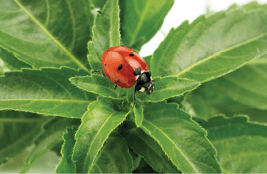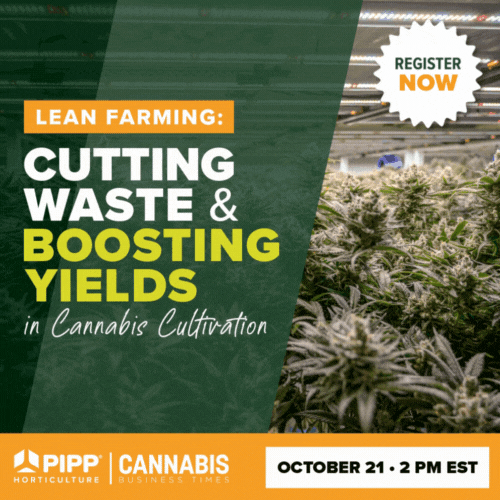1. Why are predatory insects an integral part of an IPM program?

By introducing insects early and establishing strong populations of predators, pest insect numbers can be kept below thresholds, therefore preventing excess treatments.
Sometimes other treatments are necessary, but that is the beauty of IPM. Predatory insects comprise one piece of the IPM pie and work congruously with the other mechanisms for pest control. IPM programs have room for multiple modes of action, including trapping, mechanical control, predatory insects and, if necessary, spraying in moderation.
Overuse of certain insecticides can lead to resistance. By minimizing chemical input and using predatory insects for pest control, insect resistance is avoided and end product testing risks reduced.
2. How can I create an environment conducive for optimal insect effectiveness?
Predatory insects, like many living things, have requirements for living environments. Ideal temperatures and humidity ranges, along with the preferred food source, promotes maximum predator effectiveness and reproduction rates. Cover cropping can help provide conducive habitats for predator breeding as well as help to control moisture within the soil. The use of compatible or soft insecticides can also keep pest populations under control.
3. Why is continuity important in a predatory insect program?

Ensuring that predatory insects are thriving can lessen the pest population. By providing good habitats and augmented predator releases, predators can outcompete a pest. A single application of predatory insects will not provide the rate of consumption necessary to compete with rapid pest reproduction rates. Repeated applications on a schedule allows for the introduction of additional predators while others transition through life stages. Specialist insects often require additional lead times, so planning is a necessity.
4. How can predatory insects help control not just plants in the greenhouse, but surrounding foliage and structures to prevent infestation?
When introducing predators as part of an IPM program, the complete environment must be considered. This includes monitoring and treating the entire area surrounding the growing operation. If the greenhouse, for example, is surrounded by pest-laden plants, measures must be taken to prevent those pests from moving into the grow. Clean and clear the pathways and walkways, use sprays to knock down or eliminate pests, or introduce beneficials in surrounding plants if economic thresholds allow it.
5. I want to use predatory insects, but I need to spray. What should I consider?
Timing is everything. Applying compatible or soft sprays can help to bring down pest populations to a level in which predator introductions can thrive. When using sprays, make sure there are no residual effects that will harm predators. Many biological sprays can be used in conjunction with predators without harming their populations.
As the requirement for final product testing becomes everyday practice, using chemical inputs during flowering can be problematic. It’s difficult to ensure that late use of insecticides will not test at levels that prevent the product from selling, which is not a concern when using predatory insects in late stages of growth.*
*ARBICO Organics cannot be held responsible for failed end product testing.
















